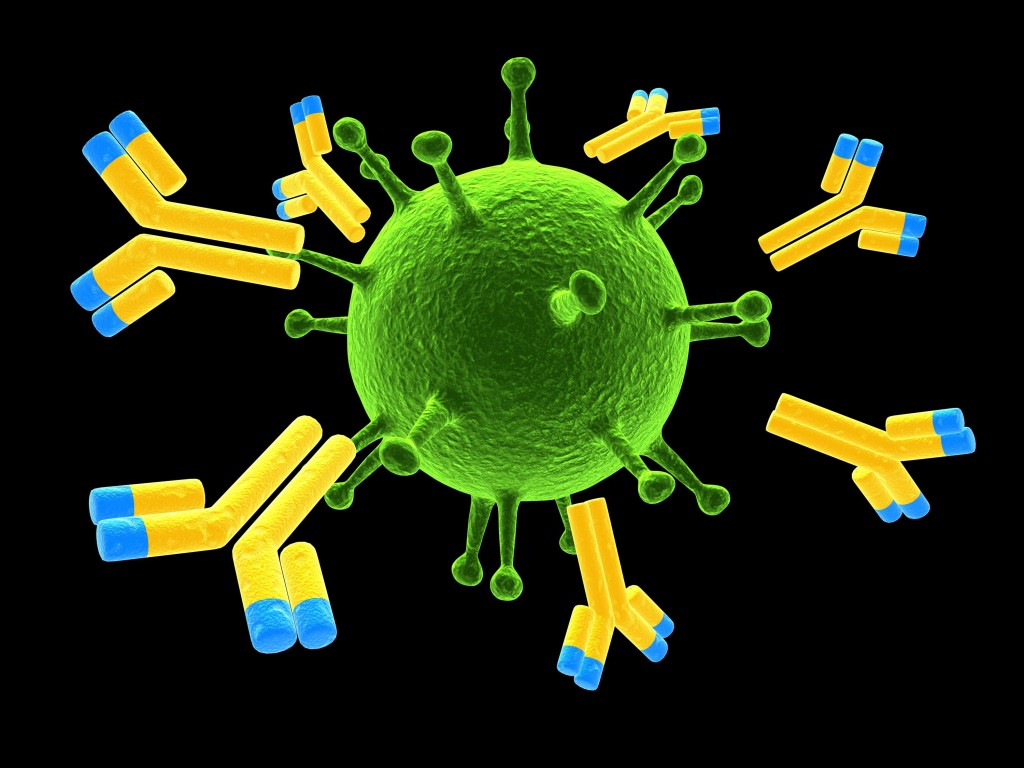Humans come into contact with external agents on a daily basis, agents that could be harmful if allowed the opportunity to enter the body. The most severe are dangerous disease-causing microorganisms, pathogens, or abnormal cells that arise within the body.
If bacteria or viruses do gain entry, the body is furnished with a composite, multifaceted internal defense system — the Immune system — that provides around the clock protection against invasion by foreign agents.
Although it is not directly a part of the Immune system, the skin is the first line of defense of the body against foreign agents. Body surfaces exposed to the external environment include the skin and mucous membranes, i.e., the lining of the respiratory and gastrointestinal tracts, which are tubes, that pass through the body and are considered external to the body.
The immune system is also involved in protection against cancerous cells and prepares the body for repair of damaged tissues.

The Immune system
When we talk about Immunity, we are referring to the body’s ability to resist or get rid of potentially dangerous foreign materials or abnormal cells. As stated earlier, the first line of defense of the body is attributable to the epithelial tissues of the body that cover the outer surface of the body (the skin) and those that line the body cavities (such as the GI tract and respiratory tract) that come into contact with the external environment (external defenses). We will speak more about that in a later article.The immune system is a system that works internally first by recognizing cells or other agents as either ‘self’ or ‘non-self’; this is the first job of the immune system. Once it recognizes a cell/agent as non-self it will go on to either destroy it or neutralize it. These agents that are non-self are generally foreign agents that have entered the body or abnormal cells somewhere in the body that it is not supposed to be or have mutated.The immune system responsibilities can be grouped into four distinguishable functions:
- Guarding against pathogens (disease-causing agents such as bacteria and viruses among others);
- Removing damaged cells and tissue affected by trauma or disease clearing the way for healing and tissue repair;
- Identifying and destroying cells that have mutated or become abnormal, which are originally from the body;
- Keeping immune responses, which are inappropriate, in check that lead to allergies or autoimmune diseases.
Types of Immunity
Immune responses may either be innate and nonspecific or adaptive and specific. Our immune systems protect us based on the harmonizing actions of two separate but symbiotic constituents: the Innate immune system and the adaptive or acquired, immune system. These two systems respond differently when it comes to timing and the selectivity of the defense mechanisms.
Innate Immunity comprises all of the body’s non-specific immune responses. This mechanism is the body’s first response that comes into play immediately on exposure to a threatening agent. These responses are non-specific and inherent, meaning that they are built-in or innate, defense mechanisms that with no preference defend against any and all foreign or abnormal material, even on exposure to it for the first time.
Such a response allows for a first line of internal defense against a wide array of threats, such as, infectious agents, chemical irritants, and tissue injury from trauma and burns. We are all born with generally the same innate-immune response mechanisms with a few slight differences in genetic makeup.
Contrarily, adaptive or acquired immunity relies on specific immune responses. Here, foreign materials to which the body has already been exposed to are being selectively targeted. At this point the body has already had an opportunity to prepare for such an attack and aim all its resources directly at the desired foe.
The adaptive immune response hence takes a considerably longer time to mount its attack when to compared to that of the innate system. The innate and adaptive immune systems work in complement to each other in order to identify, contain, then eliminate or neutralize harmful agents.
In the next article we will further explore the roles and stakeholders of these immune systems in greater detail.

Your article is exactly suitable for my requirements.Is the next article on immunity ready?
Thanks and regards,
B V Chiranjeevi
So..the synthetic chemical is considered non-self right?